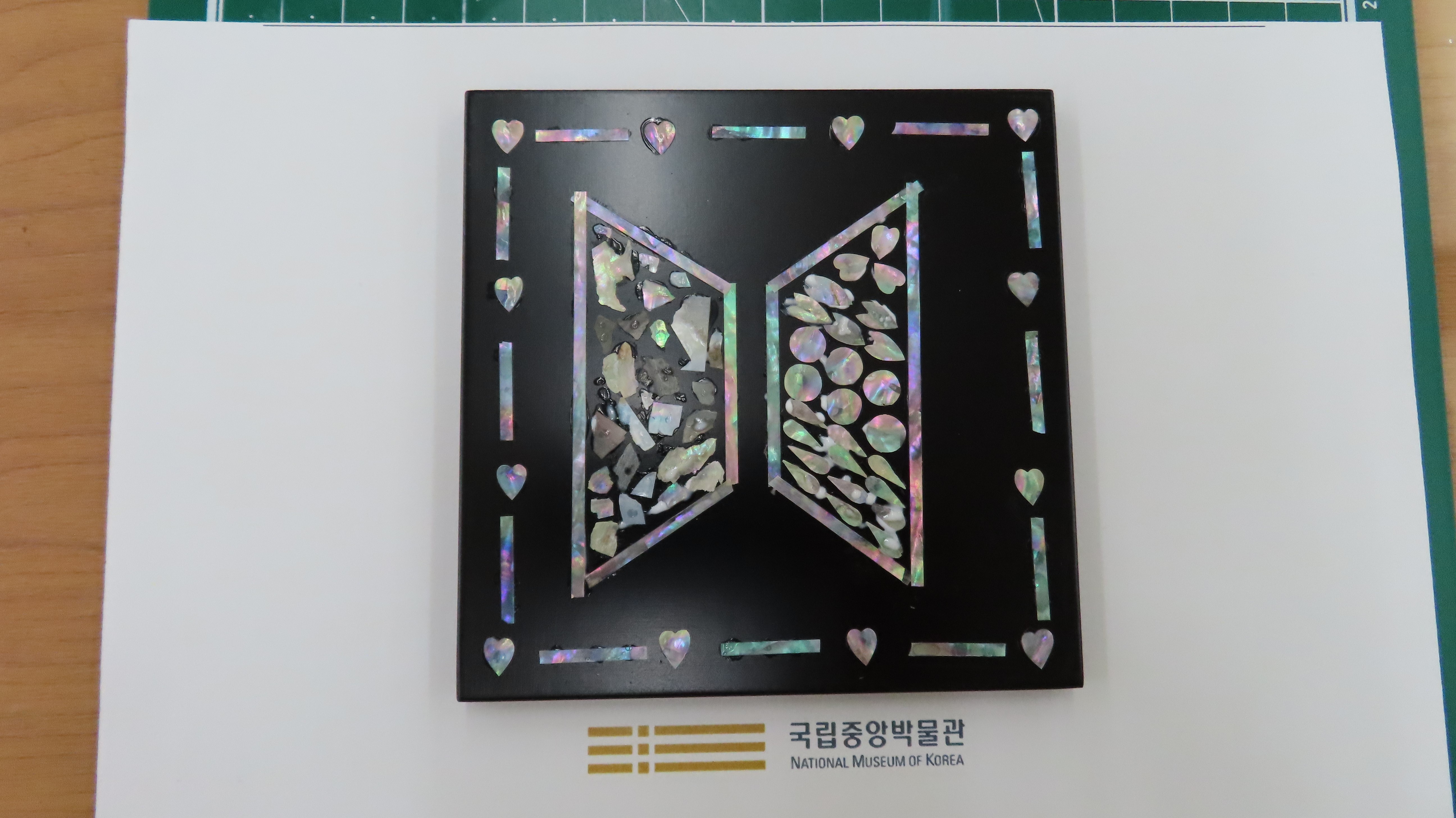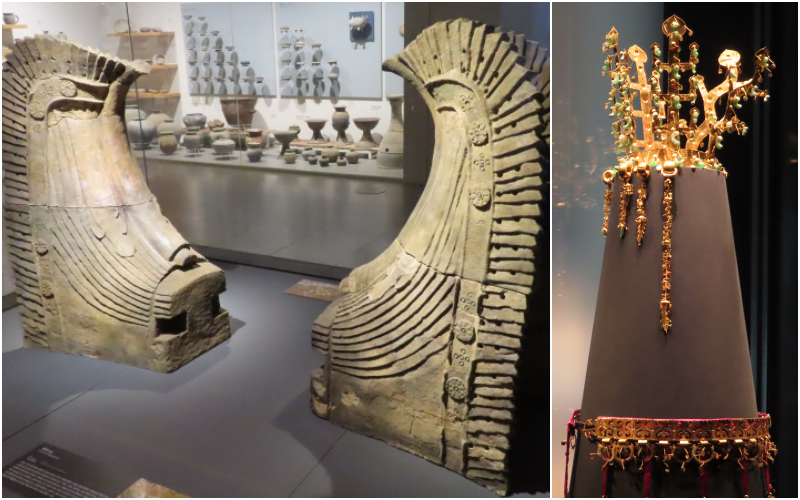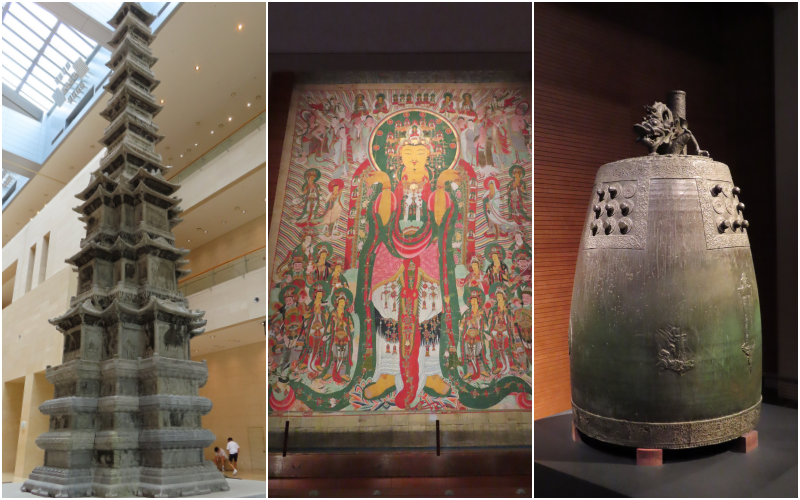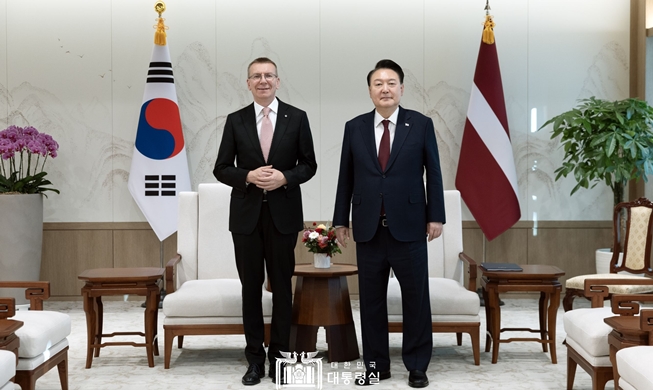- 한국어
- English
- 日本語
- 中文
- العربية
- Español
- Français
- Deutsch
- Pусский
- Tiếng Việt
- Indonesian
By Honorary Reporter Lalien Guillen from Philippines
Photos = Lalien Guillen
The National Museum of Korea in Seoul invited a group of Honorary Reporters from Korea.net to visit on July 8. As one of the invitees, I had visited the museum before but always try to find something new to see on every trip.
The tour began with lacquerware, or najeonchilgi in Korean. This craft uses mother-of-pearl to decorate things such as furniture, jewelry boxes and accessories. Our task was to design the back of a hand mirror with beautiful and shiny mother-of-pearl flakes. Initially, I wasn't nervous because I'm not good at art and crafts. With a bit of motivation and help from our instructors, I thoroughly enjoyed doing lacquerware. I decorated my mirror with the BTS logo.

My lacquerware mirror design was inspired by the logo of K-pop group BTS.
After decorating, our mirrors were coated to keep the flakes in place. While waiting for it to dry, we went on a guided tour of the museum in two teams. Since thousands of artifacts are on display and we were short on time, our guide selected the artifacts to show us.
We saw decorative roof tiles from the ancient Baekje Kingdom called chimi. These 1,400-year-old tiles were unearthed from 2013-14 in an excavation conducted in Buyeo-gun County, Chungcheongnam-do.
Next were a gold crown and belt from the ancient Silla Kingdom. I was especially glad to see these because they were discovered at Hwangnamdaechong Tomb in Gyeongju, Chungcheongbuk-do Province, a place I've visited. The two items were worn by a Silla queen as the embellished curved jades symbolized fertility.

Chimi (right) is a decorative roof tile from the Baekje Kingdom, and the gold crown on the right is from the Silla Kingdom.
We also saw the Ten-story Pagoda of Gyeongcheonsa Temple, which was believed to be built in March 1348 during the Goryeo Dynasty. The base of the pagoda is shaped like an overlapping cross, something uncommon in traditional stone pagodas in Korea.
Next was the Buddhist Hanging Scroll from Sudeoksa Temple. Every year, the museum exhibits historical scrolls from Buddhist temples nationwide. This year, a gwebul (large-scale Buddhist painting) from Sudeuksa in Yesan-gun County, Chungcheonnam-do Province, is on display through Oct. 16. This is a rare opportunity because such paintings are usually stored at temples and closed to public viewing.
We also saw a bronze bell from Cheonheungsa Temple, Goryeo-era celadon ware and white porcelain from the Joseon Dynasty.

From right, the Ten-story Pagoda of Gyeongcheonsa Temple, Buddhist hanging scroll from Sudeoksa Temple and bronze bell from Cheonheungsa Temple.
The tour concluded at the Room of Quiet Contemplation, which displays two pensive bodhisattva statues, which are among Korea's top national treasures from the late sixth and early seventh centuries. Both statues look lost in thought and symbolize enlightenment and deep reflection on birth, aging, sickness and death.

The Room of Quiet Contemplation houses these two leading Buddhist pieces of art.
enny0611@korea.kr
*This article is written by a Korea.net Honorary Reporter. Our group of Honorary Reporters are from all around the world, and they share with Korea.net their love and passion for all things Korean.
